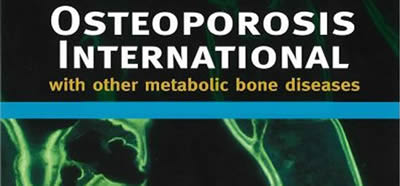Cite: Brance ML, Pons-Estel BA, Quagliato NJ, Jorfen M, Berbotto G, Cortese N, Raggio JC, Palatnik M, Chavero I, Soldano J, Dieguez C, Sánchez A, Del Rio L, Di Gregorio S, Brun LR. Trabecular and cortical bone involvement in rheumatoid arthritis by DXA and DXA-based 3D modelling. Osteoporos Int. 2021 Apr;32(4):705-714. doi: 10.1007/s00198-020-05641-4. PubMed.
Abstract
Rheumatoid arthritis (RA) patients had a higher risk of developing low bone mineral density (BMD) or osteoporosis. RA patients on classic disease-modifying antirheumatic drug (c-DMARD) therapy showed significantly lower BMD than controls, while no significant differences in most parameters were found between RA patients receiving biological disease-modifying antirheumatic drugs (b-DMARDs) and controls. The 3D analysis allowed us to find changes in the trabecular and cortical compartments.
Introduction: To evaluate cortical and trabecular bone involvement of the hip in RA patients by dual-energy X-ray absorptiometry (DXA) and 3D analysis. The secondary end-point was to evaluate bone involvement in patients treated with classic (c-DMARD) or biological (b-DMARD) disease-modifying antirheumatic drug therapies and the effect of the duration of the disease and corticosteroid therapy on 3D parameters.
Methods: A cross-sectional study of 105 RA patients and 100 subjects as a control group (CG) matched by age, sex, and BMI was carried out. BMD was measured by DXA of the bilateral femoral neck (FN) and total hip (TH). The 3D analyses including trabecular and cortical BMD were performed on hip scans with the 3D-Shaper software.
Results: FN and TH BMD and trabecular and cortical vBMD were significantly lower in RA patients. The c-DMARD (n = 75) group showed significantly lower trabecular and cortical vBMD than the CG. Despite the lower values, the b-DMARD group (n = 30) showed no significant differences in most parameters compared with the CG. The trabecular and cortical 3D parameters were significantly lower in the group with an RA disease duration of 1 to 5 years than in the CG, and the trabecular vBMD was significantly lower in the group with a duration of corticosteroid therapy of 1 to 5 years than in the CG, while no significant differences were found by standard DXA in the same period.
Conclusions: RA patients had a higher risk of developing low BMD or osteoporosis than controls. RA patients receiving c-DMARD therapy showed significantly lower BMD than controls, while no significant differences in most parameters were found between RA patients receiving b-DMARDs and controls. 3D-DXA allowed us to find changes in trabecular and cortical bone compartments in RA patients.

